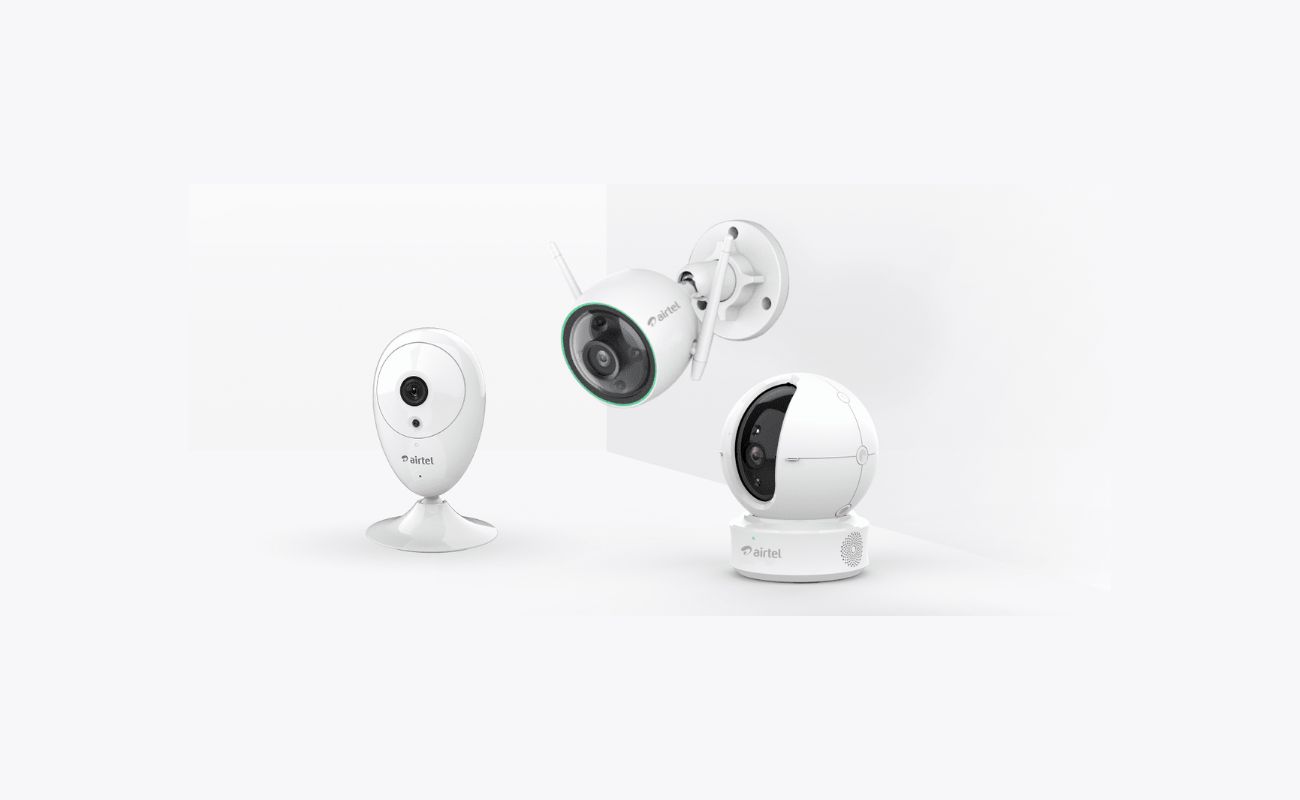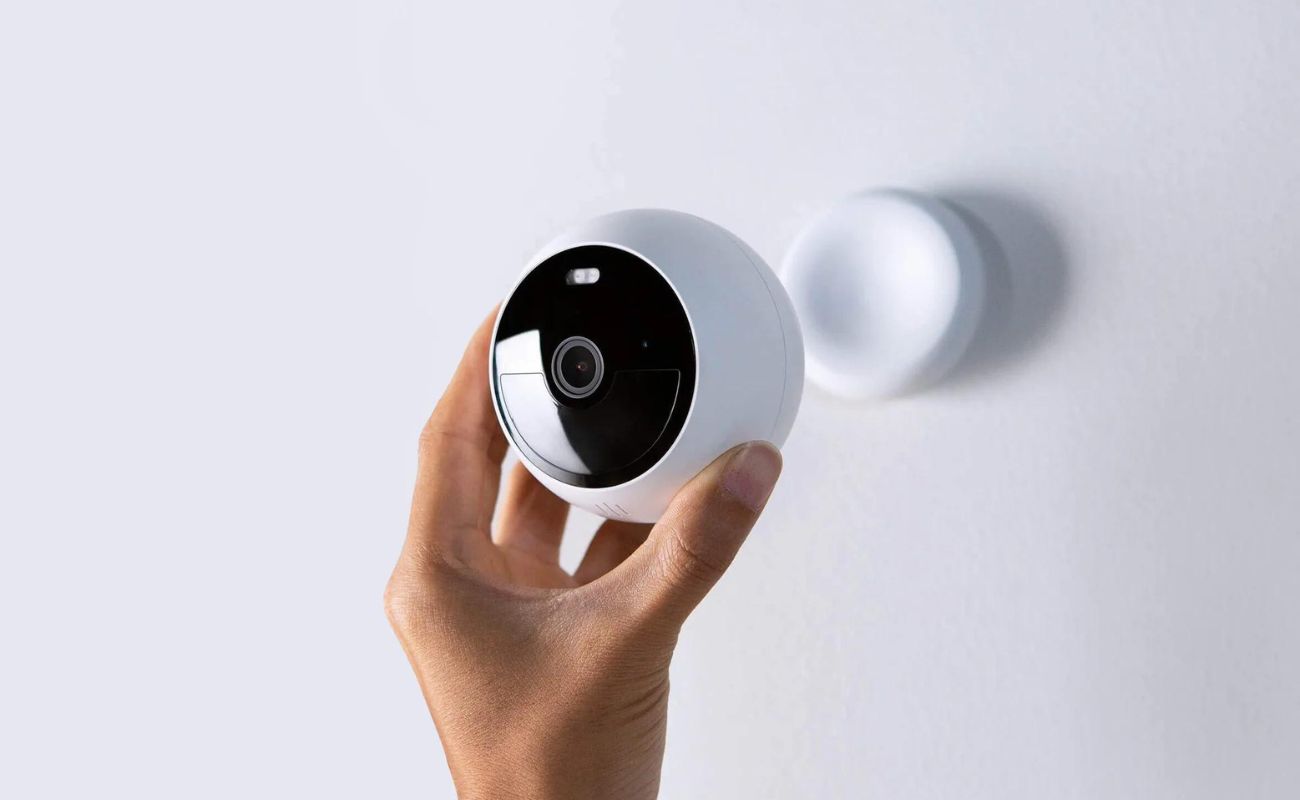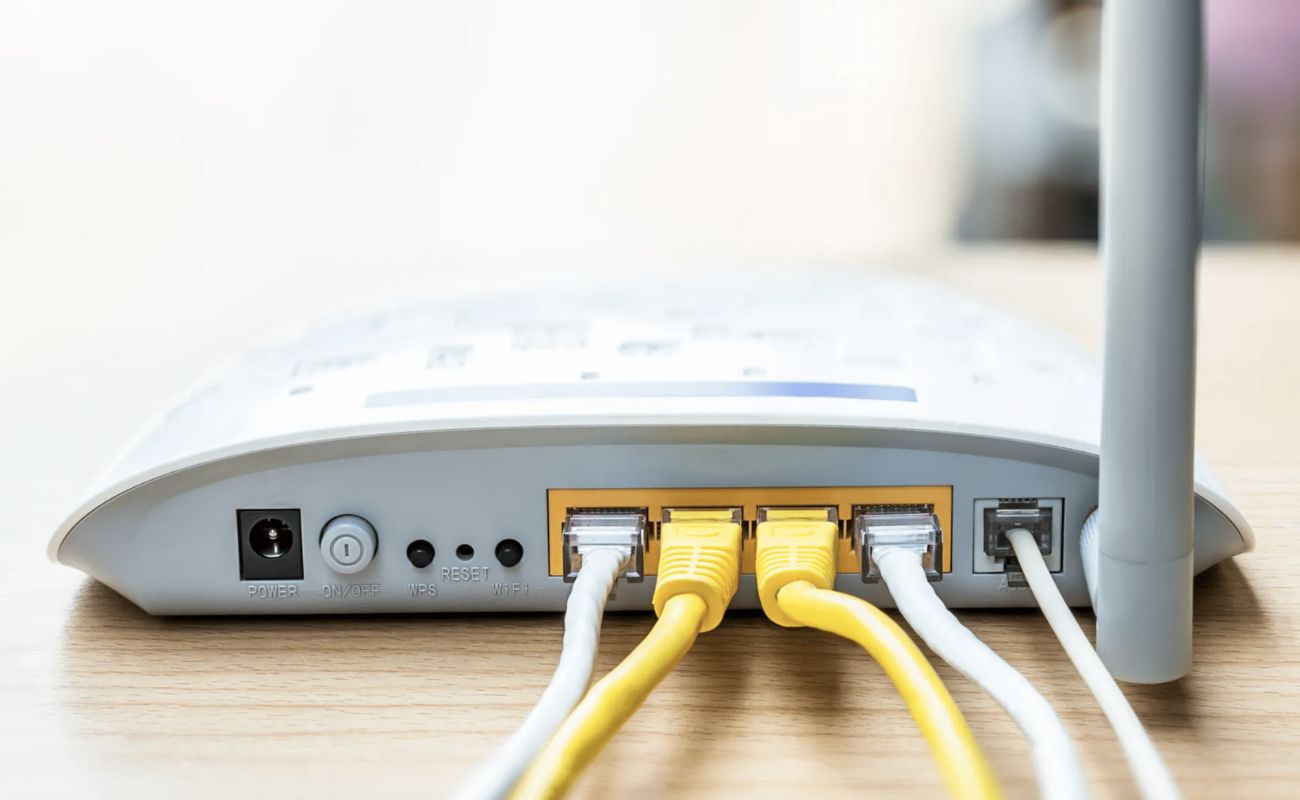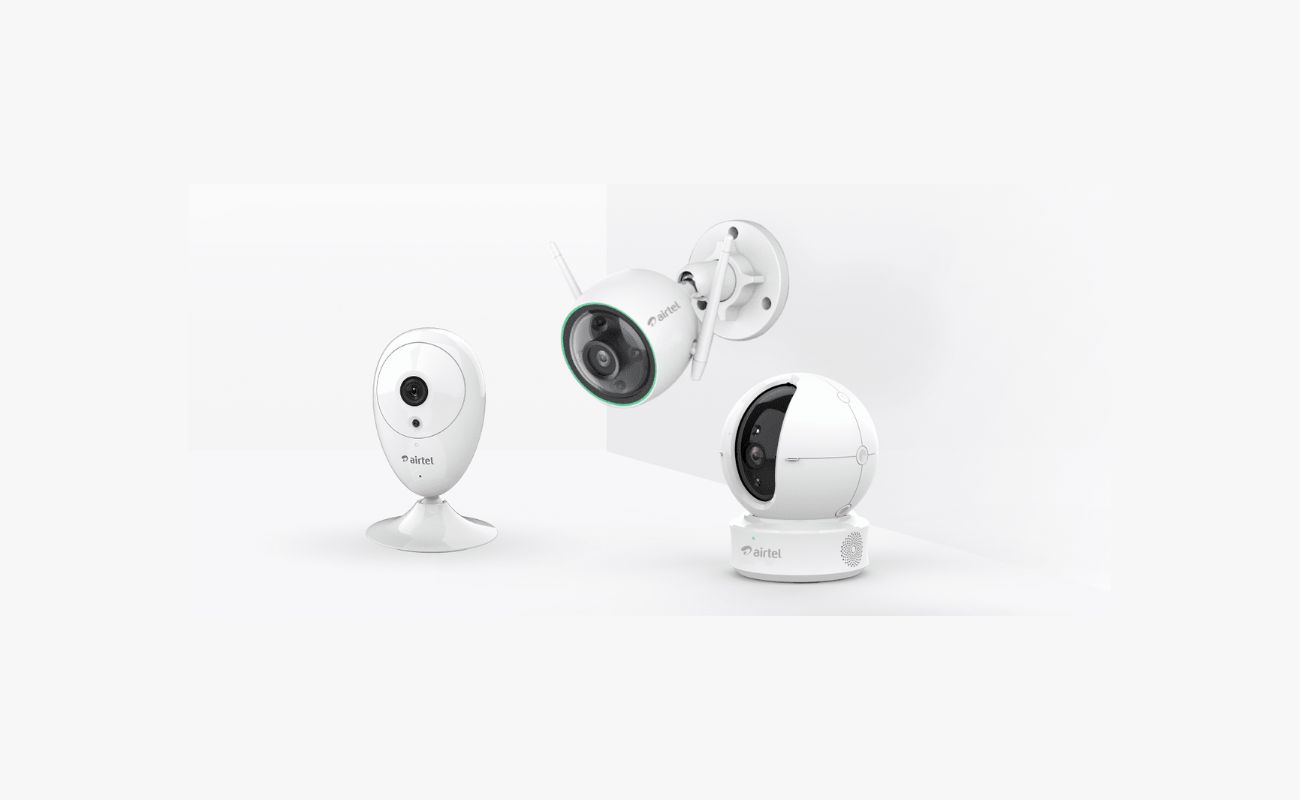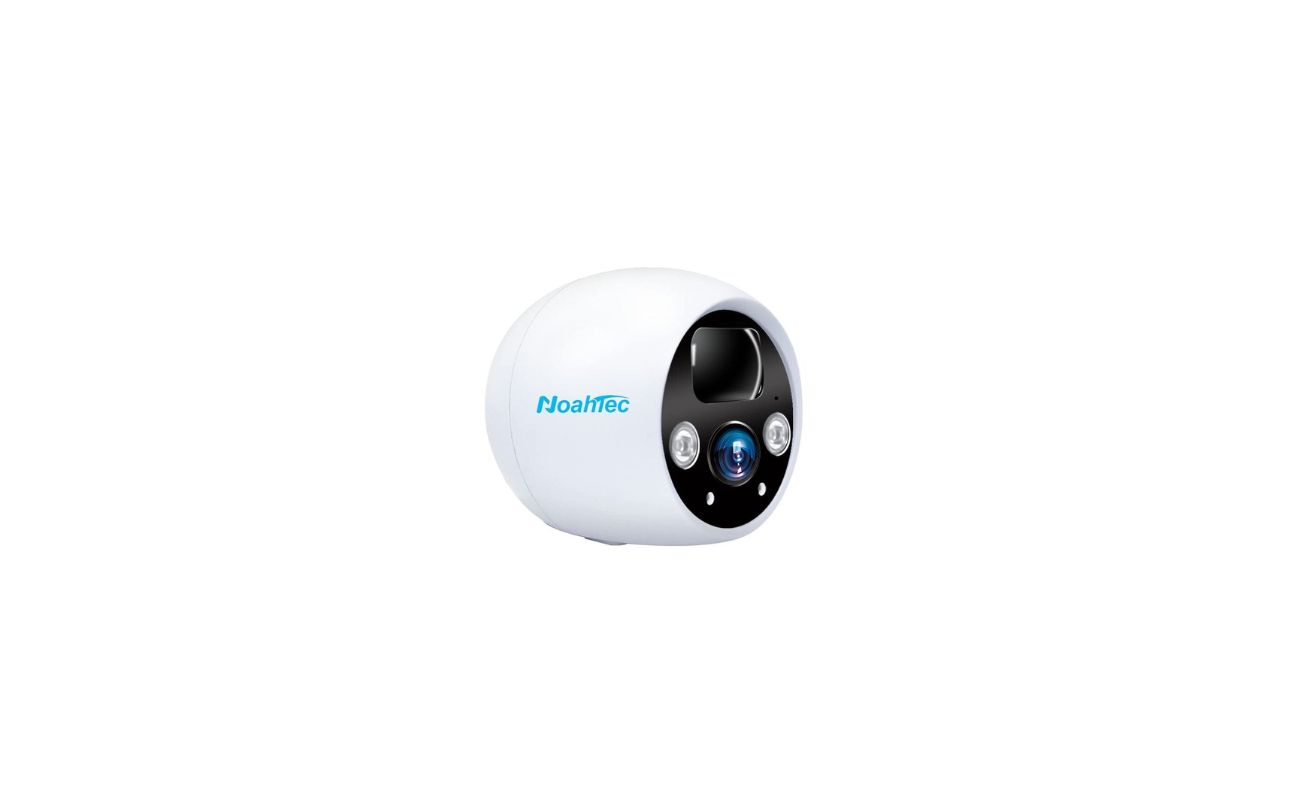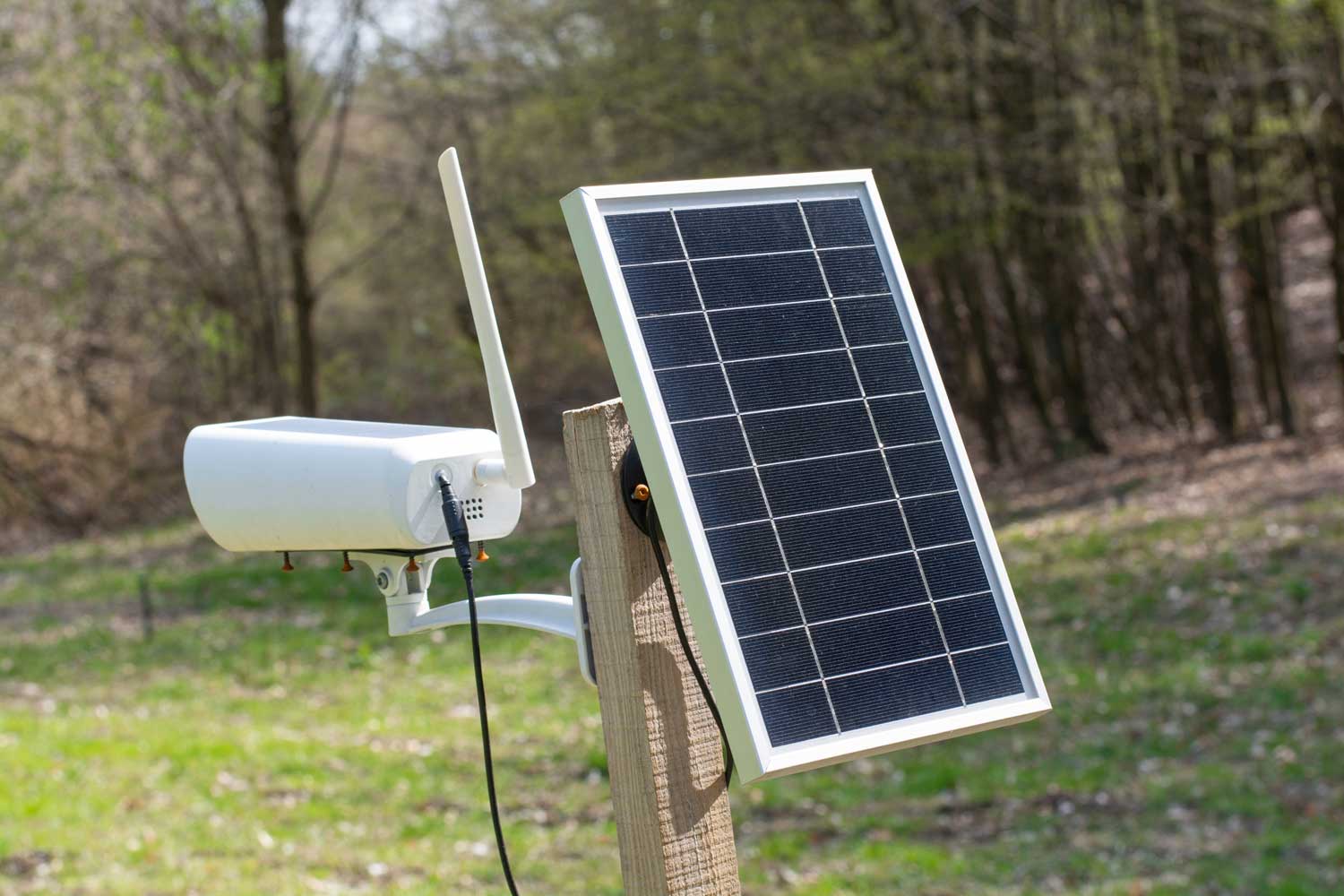Home>Home Security and Surveillance>How Do Wireless Security Cameras Work
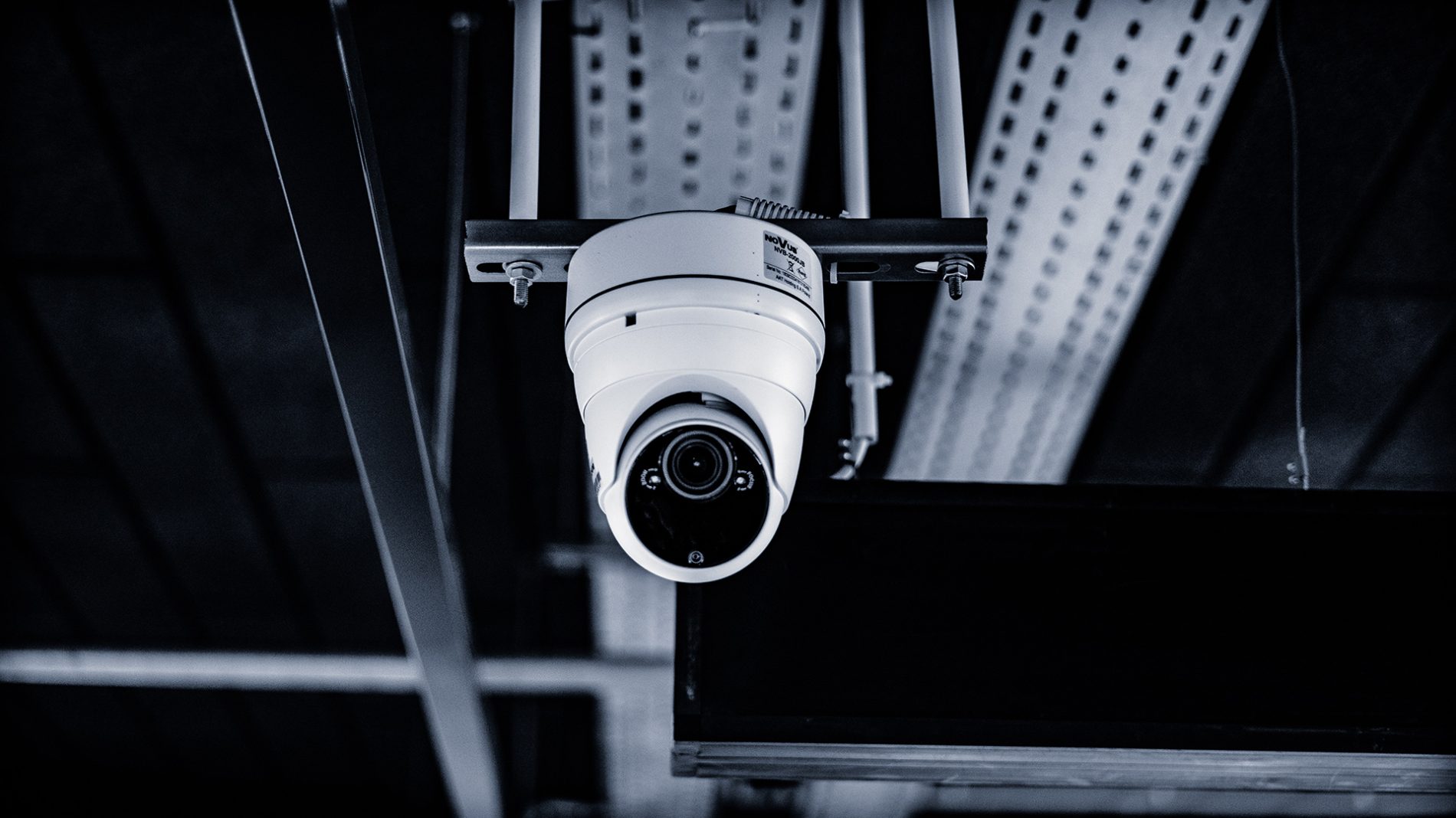

Home Security and Surveillance
How Do Wireless Security Cameras Work
Modified: March 6, 2024
Discover how wireless security cameras work for home security and surveillance. Learn about the technology behind these cameras and how they can help protect your property.
(Many of the links in this article redirect to a specific reviewed product. Your purchase of these products through affiliate links helps to generate commission for Storables.com, at no extra cost. Learn more)
Introduction
Welcome to the world of home security and surveillance! With the advancement of technology, wireless security cameras have become an increasingly popular choice for homeowners looking to protect their property and loved ones. Gone are the days of complicated wiring and limited flexibility. Wireless security cameras offer a convenient and effective solution to monitor your home or business premises.
So, what exactly are wireless security cameras? Simply put, they are surveillance cameras that use wireless technology to transmit video and audio signals without the need for physical cables. This flexibility allows you to install the cameras in various locations, both indoors and outdoors, without the hassle of drilling holes or hiding cables.
There are different types of wireless security cameras available in the market, each offering unique features to meet your specific needs. From basic models that provide essential monitoring capabilities to advanced options with advanced motion detection and night vision, there is a wide range of choices.
The components of wireless security cameras typically include the camera itself, a wireless transmitter, a power source, and a receiver. The camera captures the video footage, and the wireless transmitter sends the data to the receiver via wireless communication. The receiver, in turn, connects to your viewing device, such as a computer or smartphone, allowing you to view the live feed or recorded footage.
Now that you have an overview of what wireless security cameras are, let’s delve deeper into how they work. Understanding the inner workings of these cameras will not only help you make an informed decision when purchasing one, but also give you a better understanding of how to optimize their performance.
Key Takeaways:
- Wireless security cameras offer easy installation, flexibility in placement, and remote access, providing convenience and peace of mind for homeowners and businesses.
- Understanding the limitations of wireless security cameras, such as network dependency and storage options, helps make informed decisions for effective surveillance systems.
Read more: How Wireless Security Cameras Work
What Are Wireless Security Cameras?
Wireless security cameras, also known as Wi-Fi cameras or IP cameras, are a popular choice for home security systems. Unlike traditional wired cameras, which require physical cables for power and data transmission, wireless security cameras use wireless technology to connect to your home network.
These cameras are designed to provide surveillance and monitoring capabilities without the need for complicated wiring installations. They offer a convenient and flexible solution for homeowners who want to keep an eye on their property, both inside and outside the house.
One of the key advantages of wireless security cameras is their easy installation process. Without the need to run cables through walls or ceilings, you can quickly set up these cameras in strategic locations to cover the areas you want to monitor. They can be placed on bookshelves, mounted on walls, or even placed outdoors with weatherproofing.
Wireless security cameras use your home’s Wi-Fi network to transmit video and audio signals to your viewing device, such as a computer, smartphone, or tablet. This allows you to remotely access the live feed or recorded footage from anywhere with an internet connection.
These cameras come in various types to suit different surveillance needs. Indoor wireless cameras are designed for monitoring the interior of your home, while outdoor wireless cameras are built to withstand harsh weather conditions. There are also specialized wireless cameras for specific purposes, such as baby monitors or pet cameras.
Many wireless security cameras offer features like motion detection and night vision, enhancing their capabilities to detect and capture any suspicious activity. Some cameras even have two-way audio, allowing you to communicate with people near the camera remotely.
With the advancement of technology, wireless security cameras have become more affordable and accessible to homeowners. They offer a cost-effective solution compared to traditional wired cameras as there is no need for additional wiring or professional installation.
Overall, wireless security cameras provide a convenient and effective method for monitoring your home or business premises. They give you peace of mind knowing that you can keep an eye on your property, even when you’re away. Whether it’s for deterring potential burglars, monitoring your kids and pets, or just keeping an eye on your surroundings, wireless security cameras are a valuable addition to any home security system.
Types of Wireless Security Cameras
When it comes to wireless security cameras, there are several types available in the market to cater to different surveillance needs. Each type offers unique features and advantages, allowing you to choose the camera that best fits your specific requirements. Let’s take a closer look at some common types of wireless security cameras:
- Indoor Wireless Cameras: As the name suggests, these cameras are designed for indoor use. They are commonly used to monitor the inside of your home or office, allowing you to keep an eye on your surroundings, belongings, or loved ones. Indoor wireless cameras are typically smaller and more discreet, making them easy to blend into your home décor.
- Outdoor Wireless Cameras: Outdoor wireless cameras are built to withstand various weather conditions, making them suitable for outdoor surveillance. They are designed with weatherproofing features to protect the camera from rain, dust, and extreme temperatures. Outdoor wireless cameras are commonly used to monitor the exterior of your property, including entrances, driveways, and outdoor recreational areas.
- PTZ Cameras: PTZ stands for Pan, Tilt, and Zoom. These cameras offer the flexibility to pan horizontally, tilt vertically, and zoom in and out. They are often used in larger areas that require a wide coverage range, such as parking lots or large outdoor spaces. PTZ cameras can be controlled remotely, allowing you to adjust the camera’s angle and zoom level as needed.
- Wire-Free Cameras: Wire-free cameras, also known as battery-powered cameras, are a convenient option for areas where it is difficult to access power outlets. These cameras are powered by rechargeable batteries, allowing you to place them anywhere without the need for electrical wiring. Wire-free cameras are often used for temporary surveillance needs or in locations where power availability is limited.
- Hidden Cameras: Hidden wireless cameras are designed to be discreet and covert, allowing you to monitor an area without drawing attention to the camera itself. These cameras come in various forms, such as clocks, smoke detectors, or even everyday objects like pens or picture frames. Hidden cameras can be useful for monitoring your home or office without being easily detected.
It’s important to assess your specific surveillance needs and consider factors such as the location, purpose, and desired features before choosing the right type of wireless security camera. Whether you need indoor monitoring, outdoor surveillance, or specialized covert monitoring, there is a wireless security camera available to suit your requirements.
Components of Wireless Security Cameras
Wireless security cameras are comprised of different components that work together to provide surveillance and monitoring capabilities. Understanding the various parts of a wireless security camera can help you make informed choices when selecting or setting up your camera system. Here are the main components of wireless security cameras:
- Camera: The camera is the central component of a wireless security camera system. It captures still images or video footage of the area being monitored. Depending on the camera type and model, it may offer features such as high-definition resolution, infrared night vision, or wide-angle lenses.
- Wireless Transmitter: The wireless transmitter is responsible for transmitting the video and audio signals wirelessly. It takes the captured footage from the camera and sends it to the receiver or the network for viewing or recording. The wireless transmitter ensures seamless communication between the camera and the receiver or network.
- Receiver: The receiver receives the wireless signals from the cameras and converts them into a format that can be viewed or recorded. It connects to the viewing device, such as a computer, smartphone, or DVR/NVR system, allowing you to monitor the live feed or access recorded footage.
- Power Source: Wireless security cameras require a power source to operate. Depending on the camera model, it may be powered by batteries, a power adapter, or a combination of both. Battery-powered cameras offer flexibility in terms of camera placement, while cameras with power adapters ensure continuous operation without worrying about battery life.
- Antenna: The antenna is an essential part of a wireless security camera system that helps facilitate wireless communication. It receives and transmits radio signals between the camera and the receiver or network, ensuring a reliable and stable connection.
- Mounting Hardware: Mounting hardware is used to securely attach the camera to various surfaces. It includes brackets, screws, and other accessories necessary for proper installation. Mounting hardware ensures that the cameras are positioned correctly for optimum coverage and functionality.
These components work together to capture, transmit, receive, and display the video and audio footage from the wireless security cameras. When setting up your wireless security camera system, it’s important to consider the compatibility and quality of these components to ensure optimal performance and reliability.
Depending on the specific brand and model of your wireless security camera, there may be additional components or accessories available, such as motion sensors, microphones, or SD card slots for local storage. Understanding the components of your wireless security camera system will help you make the most of its features and capabilities.
How Wireless Security Cameras Work
Wireless security cameras utilize advanced technology to capture, transmit, and display video and audio footage without the need for physical cables. Understanding how wireless security cameras work can help you optimize their performance and make informed decisions when setting up your surveillance system.
There are three critical aspects to how wireless security cameras function: wireless communication, power source, and video capture and transmission.
Wireless Communication:
Wireless security cameras use wireless communication to transmit video and audio signals from the camera to a receiver or network. This wireless communication is typically facilitated through Wi-Fi or radio signals. The camera and the receiver are equipped with antennas that allow them to send and receive these signals.
Wireless security cameras connect to your home’s Wi-Fi network, allowing you to access the live feed or recorded footage remotely. They use wireless protocols and encryption methods to ensure secure and reliable communication between the camera and the receiver or network.
Power Source:
Wireless security cameras require a power source to function. The power source can vary depending on the camera model and design. Some cameras are powered by batteries, allowing for flexibility in camera placement and mobility. Others may require a power adapter to be plugged into an electrical outlet for continuous operation.
It is essential to consider the power source when setting up your wireless security cameras. Battery-powered cameras may require periodic battery changes or recharging, while cameras connected to power adapters offer continuous operation without worrying about battery life.
Video Capture and Transmission:
The camera component of a wireless security camera is responsible for capturing video and audio footage. The camera may have features such as high-definition resolution, infrared night vision, or wide-angle lenses to ensure clear and comprehensive surveillance.
Once the camera captures the footage, it is processed and encoded into a digital format. The wireless transmitter, located within the camera, then sends the encoded footage wirelessly to the receiver or network using the established wireless communication. The receiver receives these signals and decodes them, allowing you to view the live feed or recorded footage on your viewing device, such as a computer, smartphone, or tablet.
Some wireless security cameras offer additional features, such as motion detection, two-way audio, or cloud storage for easy access to archived footage. These features enhance the functionality and usability of the camera system, providing advanced surveillance capabilities.
Overall, wireless security cameras provide a convenient and effective solution for home security and monitoring. By taking advantage of wireless communication, choosing the right power source, and understanding the video capture and transmission process, you can optimize the performance of your wireless security camera system and ensure the safety and security of your property.
Wireless Communication
Wireless communication plays a crucial role in the functionality of wireless security cameras. It allows for the transmission of video and audio signals from the camera to a receiver or network without the need for physical cables. This wireless technology provides convenience and flexibility in camera placement, making wireless security cameras an increasingly popular choice for home surveillance systems.
Wireless security cameras utilize different wireless communication methods, with the most common being Wi-Fi and radio signals.
Wi-Fi Communication:
Wi-Fi, or wireless fidelity, is a widely used wireless communication technology that allows devices to connect to the internet or local networks wirelessly. By integrating Wi-Fi capabilities, wireless security cameras can connect to your home’s Wi-Fi network, enabling remote access to live feeds and recorded footage.
During the setup process, the camera connects to your Wi-Fi network using your Wi-Fi credentials. It establishes a secure connection and communicates with the network gateway or router in your home. This connection allows the camera to transmit video and audio signals to your viewing device, such as a computer or smartphone, through the internet. It also enables control and configuration of the camera settings remotely.
Wi-Fi communication for wireless security cameras operates on specific frequencies, such as 2.4 GHz or 5 GHz. The choice of frequency can impact the range, signal strength, and potential interference from other devices operating within the same frequency range.
Radio Signal Communication:
Some wireless security cameras utilize radio signals for communication. These cameras typically operate on specific radio frequencies and employ modulation techniques to transmit and receive data.
Radio frequency communication in wireless security cameras can range from short-range to long-range, depending on the specific camera model and design. Short-range radio systems may be suitable for indoor monitoring, whereas long-range radio systems can be used for expansive outdoor coverage.
Wireless security cameras that use radio signals for communication often come with their own receivers, which are specifically designed to receive and process the camera’s signals. These receivers are typically connected to a viewing device, such as a monitor or DVR/NVR system, allowing you to view the live feed or recorded footage without relying on an internet connection.
Encryption and Data Security:
Wireless security cameras prioritize data security to protect the privacy and integrity of the transmitted information. This is particularly important when transmitting video and audio footage over a Wi-Fi network or radio signals.
Most wireless security cameras employ encryption protocols, such as WPA2 (Wi-Fi Protected Access 2), to secure the wireless communication between the camera and the receiver or network. Encryption ensures that unauthorized users cannot access the camera’s video feed or intercept the transmitted data.
Additionally, some wireless security cameras offer advanced security features, such as two-factor authentication or secure cloud storage, to provide an extra layer of protection for your surveillance footage.
Wireless communication in wireless security cameras has revolutionized the way we monitor and secure our homes and businesses. By harnessing the power of Wi-Fi or radio signals, these cameras provide the flexibility and convenience of remote access and surveillance. With proper security measures in place, wireless security cameras offer a reliable and secure option for protecting your property and loved ones.
Power Source
The power source is a crucial component of wireless security cameras, providing the necessary energy to operate the camera system. It is essential to understand the different power options available to ensure continuous and reliable operation of your wireless security cameras.
Read more: How Do Wireless Outdoor Cameras Work
Battery-Powered Cameras:
One common power source for wireless security cameras is batteries. Battery-powered cameras offer flexibility in camera placement and mobility. They eliminate the need for electrical wiring and allow you to install the cameras in locations where power outlets are not easily accessible.
These cameras typically use rechargeable batteries, such as lithium-ion or lithium-polymer batteries, which can be recharged using a power adapter or USB cable. The battery life varies depending on factors such as camera usage, video quality settings, and the frequency of motion events triggering the camera to record. It is important to consider the estimated battery life of the camera and have a proper recharging routine in place to ensure continuous operation.
Battery-powered cameras are suitable for temporary surveillance needs, remote locations, or areas where a wireless camera system needs to be quickly installed or relocated.
Power Adapter:
Another power source option for wireless security cameras is a power adapter. These cameras require a direct connection to an electrical outlet using a power adapter, similar to how other electronic devices are powered.
Cameras with power adapters offer a continuous and reliable power supply without worrying about battery life or recharging. This ensures uninterrupted surveillance and eliminates the need to monitor battery levels or replace batteries.
Power adapter-powered cameras are commonly used for long-term surveillance needs or areas where a stable power source is readily available, such as indoor installations.
Combination of Battery and Power Adapter:
Some wireless security camera models offer the option to use both batteries and a power adapter. This combination provides flexibility in camera placement while ensuring continuous operation even when the batteries are low or depleted.
The camera may rely on batteries as the primary power source, automatically switching to the power adapter when the batteries need recharging. This feature allows for uninterrupted surveillance and peace of mind, as the camera will always have a power backup option.
It is important to consider the specific power requirements of your wireless security cameras and choose the appropriate power source accordingly. Factors such as camera usage, location, and access to power outlets should be taken into account when determining the best power source for your surveillance system.
Regardless of the power source chosen, it is essential to ensure that the camera’s power supply is reliable and consistent. Regular maintenance and monitoring of the power source can help prevent any interruptions in surveillance and ensure that your wireless security cameras are functioning optimally.
Video Capture and Transmission
Video capture and transmission are integral processes in wireless security cameras to capture, encode, and transmit video and audio footage. Understanding how these processes work is essential to optimizing the performance and quality of your surveillance system.
Read more: How Do Wireless Security Systems Work?
Camera Capture:
The camera is responsible for capturing video and audio footage in wireless security cameras. The quality and capabilities of the camera can vary depending on the camera model and brand.
Modern wireless security cameras often come equipped with high-definition (HD) resolution capabilities, allowing for clear and detailed video capture. Some cameras also feature wide-angle lenses, enabling a broader field of view and capturing a larger area. Infrared (IR) night vision is another common feature that allows the camera to capture footage in low-light or dark conditions.
When the camera detects motion or is triggered by an event, such as a person walking by or a door opening, it begins capturing video footage. The camera continuously records until the motion or event ceases, or as per the configured settings.
Video Encoding:
Once the camera captures the video footage, it undergoes an encoding process to convert the raw video data into a digital format that can be transmitted wirelessly. Encoding reduces the file size while maintaining the quality of the video. The most commonly used video encoding formats for wireless security cameras are H.264 and H.265, which provide efficient compression while preserving clarity.
Encoding helps optimize the transmission process, as it reduces the bandwidth required to transmit the video and audio data wirelessly. This is particularly important when transmitting the footage over Wi-Fi or radio signals, as it ensures smooth and uninterrupted transmission without straining the network connection.
Wireless Transmission:
Once the video footage is encoded, it is sent from the camera to the receiver or network wirelessly. This wireless transmission relies on the established wireless communication method, such as Wi-Fi or radio signals.
For Wi-Fi-enabled wireless security cameras, the encoded footage is transmitted over the Wi-Fi network to the designated receiver or network gateway. The camera establishes a secure connection with the network, ensuring that the video data is transmitted safely and reliably.
In the case of cameras that rely on radio signals, the encoded video footage is transmitted via radio frequencies to the dedicated receiver. The receiver receives and processes the signals, allowing for live viewing or recording of the footage using a compatible viewing device or DVR/NVR system.
The wireless transmission of the video and audio footage from the camera to the receiver or network allows for remote access and monitoring. Users can view the live feed or access recorded footage from their viewing devices, such as computers, smartphones, or tablets.
By understanding the video capture and transmission processes of wireless security cameras, you can optimize the quality of the captured footage and ensure smooth and reliable transmission. Consider factors such as camera resolution, encoding formats, and the chosen wireless communication method to maximize the effectiveness of your surveillance system.
Encryption and Data Security
Encryption and data security are crucial aspects of wireless security cameras to ensure the protection and integrity of the captured video and audio footage. By implementing robust security measures, wireless security cameras enhance the privacy of your surveillance system and safeguard against unauthorized access or tampering.
Read more: How Do Home Security Cameras Work
Secure Communication:
Wireless security cameras use various encryption protocols to secure the communication between the camera and the receiver or network. The most common encryption protocol used is WPA2 (Wi-Fi Protected Access 2), which provides strong data encryption and authentication.
WPA2 encrypts the video and audio data before transmission, making it extremely difficult for potential attackers to intercept or decipher the transmitted information. This encryption ensures that the footage remains private and confidential, even if it is intercepted during the wireless transmission process.
Authentication:
Authentication is another important security measure employed by wireless security cameras. It ensures that only authorized individuals or devices can access and view the surveillance footage.
Many wireless security cameras require users to authenticate themselves with a username and password before accessing the live feed or recorded footage. This prevents unauthorized individuals from gaining access to the camera system through the viewing device or remote access applications.
Some advanced wireless security cameras may also offer two-factor authentication, where users are required to provide an additional security code or use a biometric identifier, such as fingerprint or facial recognition, for an added layer of security.
Secure Cloud Storage:
Cloud storage is a popular option for storing recorded footage from wireless security cameras. However, it is essential to choose a cloud storage provider that prioritizes data security.
Secure cloud storage providers employ encryption techniques to protect stored data from unauthorized access. They apply encryption both during the transmission of the footage to the cloud and while the data is at rest on the cloud server.
By storing surveillance footage in a secure cloud environment, you can ensure that the data is protected, even if the physical camera or recording device is compromised or damaged.
Physical Security:
In addition to encryption and data security protocols, it is vital to consider the physical security of the wireless security cameras themselves. Ensure that the cameras are installed in secure locations, out of reach of potential tampering or vandalism.
Furthermore, regularly update the camera firmware and associated software to ensure that any security vulnerabilities are addressed and patched. Manufacturers often release firmware updates that include security enhancements and bug fixes, so staying up to date with these updates is essential.
Overall, encryption and data security measures implemented in wireless security cameras are pivotal in safeguarding the privacy and integrity of your surveillance footage. By choosing cameras with strong encryption protocols, implementing secure authentication, utilizing secure cloud storage, and maintaining physical security, you can have confidence in the confidentiality and security of your wireless security camera system.
Advantages of Wireless Security Cameras
Wireless security cameras offer numerous advantages over traditional wired cameras, making them a popular choice for homeowners and businesses alike. Whether you’re looking to enhance your home security or monitor your business premises, wireless security cameras provide convenience, flexibility, and advanced features that cater to various surveillance needs. Here are the key advantages of wireless security cameras:
Easy Installation:
One of the primary advantages of wireless security cameras is their easy installation process. Unlike wired cameras that require complex wiring and professional installation, wireless cameras can be installed by homeowners without specialized skills or tools. With no need for drilling holes or hiding cables, you can install wireless security cameras in various locations, both indoors and outdoors, quickly and hassle-free.
Flexibility in Camera Placement:
Wireless security cameras provide flexibility in camera placement, as they are not constrained by the availability of power outlets or the limitations of wiring. You can place them virtually anywhere within range of your Wi-Fi network or receiver, ensuring optimal coverage of the areas you want to monitor. This flexibility allows you to adapt your surveillance setup as needed, accommodating changes in your property layout or surveillance requirements.
Remote Access and Monitoring:
With wireless security cameras, you can remotely access and monitor your surveillance footage from anywhere with an internet connection. Whether you’re at work, on vacation, or away from home, you can use your computer, smartphone, or tablet to view the live feed or access recorded footage. This remote access provides peace of mind, as you can keep an eye on your property in real-time and stay connected to your home or business premises at all times.
Read more: How Do Cellular Security Cameras Work
Advanced Features:
Wireless security cameras come equipped with a range of advanced features that enhance their surveillance capabilities. These features can include motion detection, night vision, two-way audio communication, and real-time alerts. Motion detection allows the camera to automatically start recording or send notifications when movement is detected, ensuring that you don’t miss any important events. Night vision enables clear imaging in low-light or dark conditions, while two-way audio allows you to communicate with people near the camera, enhancing the security and convenience of your surveillance system.
Scalability and Expandability:
Wireless security camera systems offer scalability and expandability, allowing you to customize and grow your surveillance setup as needed. You can add additional cameras to cover more areas of your property, or integrate other compatible devices, such as door and window sensors or smart home automation systems, for a comprehensive security solution. This scalability and expandability ensure that your wireless security camera system can adapt to future security needs or changing circumstances.
Cost-Effective Solution:
Wireless security cameras offer a cost-effective solution compared to traditional wired cameras. They eliminate the need for running cables or hiring professionals for installation, reducing both material and labor costs. Additionally, wireless security cameras often come with remote access capabilities and bundled software, eliminating the need for additional monitoring equipment or subscriptions.
Portability and Mobility:
Wireless security cameras, particularly battery-powered options, offer portability and mobility. You can easily move or relocate the cameras to different areas or positions as needed, providing temporary surveillance or adapting to changing security requirements. This portability also allows for monitoring locations without access to power outlets or in remote areas where power availability is limited.
Overall, wireless security cameras provide a range of advantages that make them an attractive option for modern surveillance needs. From easy installation and flexibility in camera placement to remote access and advanced features, wireless security cameras offer convenience, scalability, and cost-effectiveness in enhancing your home or business security.
Limitations of Wireless Security Cameras
While wireless security cameras offer numerous advantages, it’s important to be aware of their limitations as well. Understanding these limitations can help you make informed decisions when setting up your surveillance system and ensure that your expectations align with the capabilities of wireless security cameras. Here are the key limitations to consider:
Dependency on Wi-Fi or Network:
Wireless security cameras rely on a stable Wi-Fi network or network connectivity for communication and remote access. If your network experiences interruptions or becomes unstable, it can impact the performance and reliability of your wireless security cameras. Additionally, the distance between the cameras and the Wi-Fi router can affect the signal strength, potentially leading to connectivity issues or reduced video quality. It’s important to ensure a strong and reliable network connection to optimize the functionality of wireless security cameras.
Limitations in Range:
Wireless security cameras have a limited range of transmission, typically ranging from 100 to 300 feet, depending on the environment and obstructions. Thick walls, large metal objects, or other electronic devices can interfere with the wireless signals, reducing the effective range of the cameras. It is essential to consider the range limitations and ensure that the placement of the cameras is within the range of your network coverage to maintain a stable connection.
Power Source Dependence:
Wireless security cameras require a power source to operate, whether it’s through batteries or a power adapter. Battery-powered cameras may require periodic battery changes or recharging, which can be inconvenient if the batteries run out frequently. Power adapter-dependent cameras may limit their placement based on the availability of nearby power outlets. It’s important to consider the power source requirements and how they align with your surveillance needs and camera placement options.
Read more: How Do Wireless Security Cameras Get Power?
Bandwidth Consumption:
Streaming live video and audio footage from wireless security cameras consumes bandwidth on your Wi-Fi network. If you have multiple cameras or other connected devices accessing the network simultaneously, it can put a strain on your internet bandwidth and potentially affect the performance of other devices connected to the network, such as streaming services or online gaming. It is essential to understand the bandwidth consumption of your security cameras and assess the impact it may have on your network’s capabilities and overall internet speed.
Limited Storage Options:
Many wireless security cameras offer limited onboard storage for recorded footage. They may support local storage through SD cards or offer cloud storage subscriptions for additional storage space. However, the amount of storage available may be limited, especially for cameras with built-in SD card slots. This limitation may require regular maintenance and management of the storage to prevent overwriting important footage. It’s important to consider your storage needs and choose a camera or storage solution that aligns with your recording requirements.
Interference from Other Devices:
Wireless security cameras operate on specific frequency bands, such as 2.4 GHz or 5 GHz, which can be shared with other electronic devices like Wi-Fi routers, cordless phones, or microwave ovens. The presence of these devices in close proximity to the cameras can cause interference, affecting the signal strength and potentially leading to connectivity issues or reduced video quality. It’s important to mitigate interference by selecting wireless security cameras that operate on less crowded frequency bands and minimizing the presence of conflicting devices near the cameras.
By understanding and considering these limitations, you can make informed decisions when setting up your wireless security camera system. While they may have certain limitations, wireless security cameras still offer a convenient and effective solution for home or business surveillance, providing flexibility, remote access, and advanced features to enhance your security measures.
Conclusion
Wireless security cameras have revolutionized the world of home security and surveillance, offering a convenient and flexible solution for monitoring your property and loved ones. With their easy installation process, flexibility in camera placement, and advanced features, wireless security cameras have become a popular choice for homeowners and businesses alike.
Throughout this article, we explored the various aspects of wireless security cameras, from understanding what they are and how they work to examining their components and the advantages they offer. We also discussed important considerations such as wireless communication, power sources, video capture and transmission, and encryption and data security.
Wireless security cameras provide several benefits, including easy installation, flexibility in camera placement, remote access and monitoring, advanced features like motion detection and night vision, scalability, and cost-effectiveness. They offer a range of options for indoor and outdoor surveillance, allowing you to customize your security system to fit your specific needs.
However, it is important to be aware of the limitations of wireless security cameras, such as their dependence on Wi-Fi or networks, range limitations, power source requirements, bandwidth consumption, limited storage options, and potential interference from other devices. Understanding these limitations ensures realistic expectations and allows you to make informed decisions when setting up your surveillance system.
In conclusion, wireless security cameras are a powerful tool for enhancing your home or business security. They provide convenience, flexibility, and advanced features that can help deter potential intruders, monitor your property in real-time, and provide peace of mind. By taking into account the specific needs and considerations of your surveillance setup, you can optimize the performance and effectiveness of your wireless security camera system.
Remember, choosing the right wireless security cameras, understanding their capabilities and limitations, and implementing proper security measures ensure that your property and loved ones are well-protected. Stay vigilant, stay informed, and enjoy the benefits that wireless security cameras bring to your overall security efforts.
Frequently Asked Questions about How Do Wireless Security Cameras Work
Was this page helpful?
At Storables.com, we guarantee accurate and reliable information. Our content, validated by Expert Board Contributors, is crafted following stringent Editorial Policies. We're committed to providing you with well-researched, expert-backed insights for all your informational needs.
